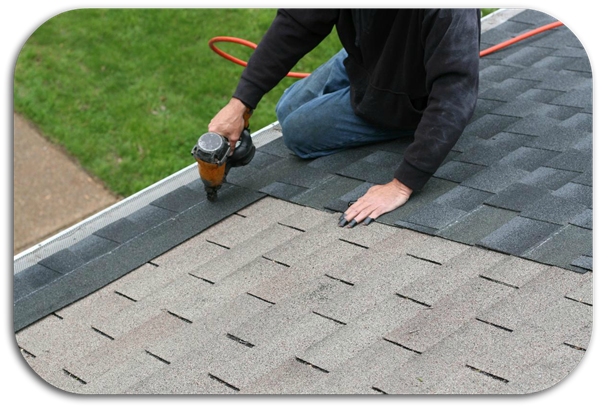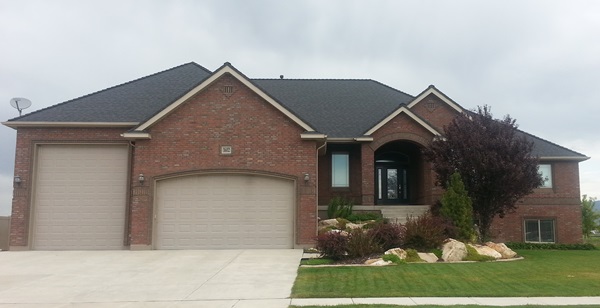Get Your Estimate
Severe Utah Weather -
How do Rain, Snow, and Ice Affect Your Roof
Interesting Fact: Common sign of severe weather damage include missing or broken shingles, cracks, dents, holes, and leaks
Interesting Fact: High winds can bend, curl and tear away shingles, causing damage to the bonds that hold a roof together.
If my roof leaks in the rain, do I need to replace it?
If the leak is small and the rest of the roof is in good shape, it may be possible to repair just the problem area to prevent weather damage. If the leak is large or if there are multiple leaks, then it might be best to look at replacing it before more severe weather occurs. Even if the leak is small, if it’s left untreated it can build up and cause excessive and expensive weather damage which could result in an even costlier situation later on.
Can my roof be water-proofed?
There are steps you can take to waterproof and prevent damage from rain, snow, and ice. If you are replacing the or working on new construction there are things such as thermoplastic polyolefin that can be put down under shingles to help. Most asphalt shingles have materials that makes them waterproof in rain and other severe weather. One helpful hint to making sure rain stays out is to regularly check shingles and flashing to make sure they are in good shape.
How does heavy snow affect my roof?
There are a couple of ways snowy weather can cause severe damage. The most damaging factor is simply the weight. Heavy snow storms can cause continual stress, which weakens the roof. Another type of weather damage caused by snow is moisture penetration from melting and refreezing ice. If the base of the snow melts and then freezes, the moisture in the shingles will expand, causing them wear out more quickly.
What is an ice dam, and how can it be avoided?
An ice dam is created in a similar process to icicles. The ice or snow melts, but before it can drain, the water freezes along the eaves and edges. It then blocks water from running off, which can force the water under the shingles and into the roof or house. It also can become severe enough that rain gutters and flashing will be torn off. The most effective long-term fix to prevent weather damage from ice dams is to install heat cables in the problem areas. For a temporary quick fix in severe weather storms, try using a hammer and chisel to break the ice loose, putting a box fan in the attic and aiming at the leak, or using a long handled rake to scrape off as much ice as possible. Just be careful, because anyone familiar with Home Alone or National Lampoon’s Christmas Vacation is aware that climbing a ladder in wintertime can be an accident waiting to happen.
Does hail damage my home, and how can I prevent this damage?
Hail can cause severe weather damage to a roof, but there are many factors as to how much damage a hail storm will cause. The size and force of the hail is obviously the biggest issue. It also depends greatly on the angle the hail strikes. A straight on hit will cause more severe problems, so the angle of the hail (from the wind) combined with the pitch of the roof will impact the severity of the damage. The type ofshingles used also directly influences this. Aluminum shingles are more likely to be dented and damaged by severe weather than asphalt shingles.
Can a new roof be installed during the winter?
Weather and temperature can sometimes allow for reroofing during wintertime. Sometimes damage will be unavoidable, but if it’s possible to wait until a dryer time of year to perform repairs, that’s usually for the best. Sometimes the severe winter weather will cooperate enough for emergency work to be done quickly. It needs to be dry enough for installers to get on and off the house and move around safely. Rain or snow, and temperature also makes it more difficult to get a good seal with new shingles. You also don’t want to have your home or business exposed to severe temperatures or stormy winter weather.



